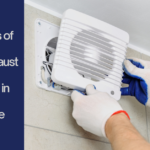An electric burner is an essential kitchen appliance that is used to heat food and cook meals. It can be challenging to understand the differences between different types of electric burners on the market and to select the one that suits your needs. This article will provide an in-depth guide to electric burners, including their types, how they work, their advantages and disadvantages, and how to choose the best one for your home. We will also examine the maintenance and safety tips for electric burners, compare them to gas burners, and explore the future of electric burner technology. Whether you’re a seasoned chef or a beginner cook, this article will give you a comprehensive understanding of electric burners and their place in the modern kitchen.
1. What is an electric burner?
Electric burner are common appliances in many households and kitchens. Cooking appliances such as stove tops, hot plates, and portable cookers use heating elements. Electric burners transfer electrical energy into heat energy necessary for cooking and food preparation.
1.1 Definition and basic components of Electric Burner
An electric burner consists of several basic components, including the heating element, a thermostat to regulate temperature, and a control knob to adjust the heat level. The heating element is usually made of metal and is responsible for conducting electricity and generating heat, while the thermostat controls the temperature by turning the heating element off or on.
1.2 Brief history of electric burners
William Hadaway, an American electrician, invented the first electric stove in 1892. However, electric stoves were not commercially produced until the 1920s and were initially considered a luxury item due to their high cost. Technology advancements and mass production have made them more affordable and accessible to the average household over time.
2. Types of electric burners
There are several types of electric burners available in the market. Here are the three most common:
2.1 Coil burners
Coil burners are the most traditional type of electric burner and consist of a coiled metal wire that heats up when electric current passes through it. The affordability and durability of these burners make them a popular choice for older stovetops.
2.2 Smoothtop burners
Smoothtop burners are sleek and easy to clean, which makes them popular in modern kitchens. They consist of a flat glass surface with heating elements located underneath. These burners heat up quickly and evenly and are ideal for cooking with pots and pans of different sizes.
2.3 Induction burners
Induction burners are the most efficient type of electric burner. Instead of heating the air around the pan, electromagnetism directly heats the pan. In other words, they are faster and more energy-efficient than other types of burners. Although they are more expensive, they require special cookware made of magnetic materials. You may also visit answertenant for more information.
3.1 Understanding the heating process of Electric Burner
Electric burners convert electrical energy into heat, generating heat. In this case, the heating element is heated by an electric current passing through it. As the heat is transferred to the pot or pan on top of the burner, the food inside is heated.
3.2 Components of an electric burner
Electric burners consist of several components, including the heating element, thermostat, and control knob. Metal coils or plates conduct electricity and heat up to form the heating element. By turning on and off the heating element, the thermostat regulates the temperature, while the control knob adjusts the amount of heat.
4. An overview of the advantages and disadvantages of electric burners
4.1 Advantages
Electric burners offer the advantage of being easy to operate. There is no need for special installation or configuration as they are plug-and-play. The products are also widely available and are available in a variety of sizes and styles to meet the needs of a wide variety of kitchens and cooks. Electric burners are also safer to use, as they do not produce any flames or gas fumes.
4.2 Disadvantages
One of the main disadvantages of electric burners is their slower heating time compared to gas burners. In addition, they tend to have less precise temperature control, which can make getting the right temperature for certain foods difficult. Additionally, electric burners can be less energy-efficient than gas burners, which can result in higher energy bills over time.
5. How to Choose the Right Electric Burner for Your Needs
Prior to purchasing an electric burner, there are a few things to consider. Factors such as size, power, and number of burners are important to think about. Furthermore, you should consider your cooking needs and the type of cookware that you will be using.
5.1 Factors to Consider
It is important to consider several factors when selecting an electric burner. Consider the amount of counter space you have available and the number of burners you need. The second is the power of the burner. The higher the wattage, the faster your food will be cooked.Additionally, you should consider the type of cookware you will be using. Before purchasing an electric burner, it is advisable to check the manufacturer’s recommendations regarding the type of cookware that should be used.
5.2 Popular Electric Burner Brands and Models
There are many brands and models of electric burners on the market today. Among the most popular brands are Cuisinart, Black + Decker, and Oster. Models like the Cuisinart CB-60P1 Cast-Iron Double Burner are great for those who need an additional cooking surface, while the Black + Decker Double Burner Portable Buffet Range is perfect for those who need a burner that can be used for both cooking and serving. Shop around to find the perfect electric burner for your needs.
6. Maintenance and Safety Tips for Electric Burners
As with any kitchen appliance, it’s important to properly maintain and use your electric burner to ensure both its longevity and your safety. The following are a few tips to keep in mind.
6.1 Keeping your home clean and maintained
After each use, wipe your electric burner with a damp cloth. Be sure to fully cool the burner before cleaning. You can use a soft-bristled brush to gently clean food that has become stuck on the burner. Be careful not to damage the burner’s surface by using harsh abrasives or steel wool. You should also periodically inspect your system for loose wires or any other signs of wear and tear.
6.2 Safety precautions to be taken
To ensure your safety while using an electric burner, be sure to always keep it away from water and other liquids. Never leave an electric burner unattended while it’s on, and always use pot holders or oven mitts when handling hot items. Additionally, be sure to unplug your electric burner when not in use to prevent any accidents.
7. Comparing Electric Burners to Gas Burners
When it comes to cooking, there’s always the debate between electric and gas burners. Here’s a comparison of the two.
7.1 Energy Efficiency
Electric burners are generally more energy efficient than gas burners, as they convert a higher percentage of the energy they use into heat. This means they heat up faster and use less energy overall.












